Texas Medical Center Parking Garage Problems
Texas Medical Center made $78M from parking last year. Why haven’t its busiest garages been upgraded in years?
Learn from award-winning professionals — explore our whitepapers, blogs, and the latest industry updates.
Join our dynamic organization of engineers, land surveyors, landscape architects, environmental scientists, and architects!
Talk to a market leader today! We’ll answer any questions you have about our professional services.
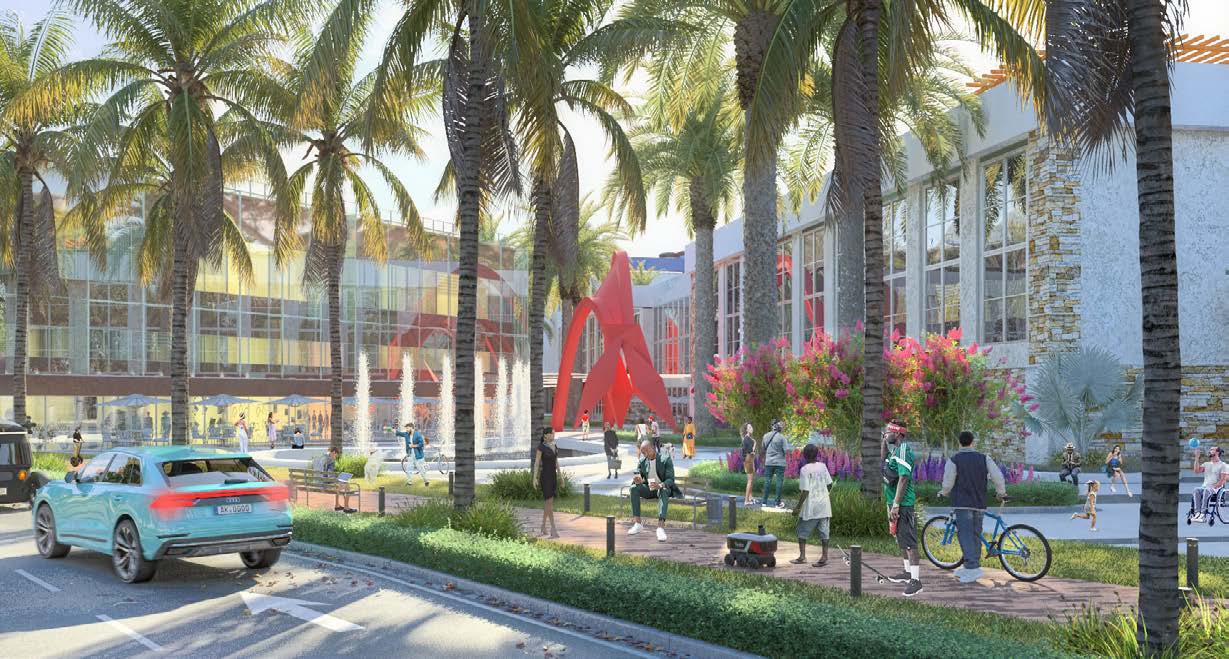
Download this article as a PDF
To illustrate how mall owners and their partners might be able to factor in trends presented in Part 1 of this Mall Redevelopment White Paper, WGI developed a hypothetical case study. We researched projects, interviewed retail experts, and examined challenges and opportunities common to mall redevelopment projects. In presenting an illustrative example, we can explore a range of issues and trends affecting retail and mall redevelopment projects, and include innovative strategies to transform mall properties into regional assets.
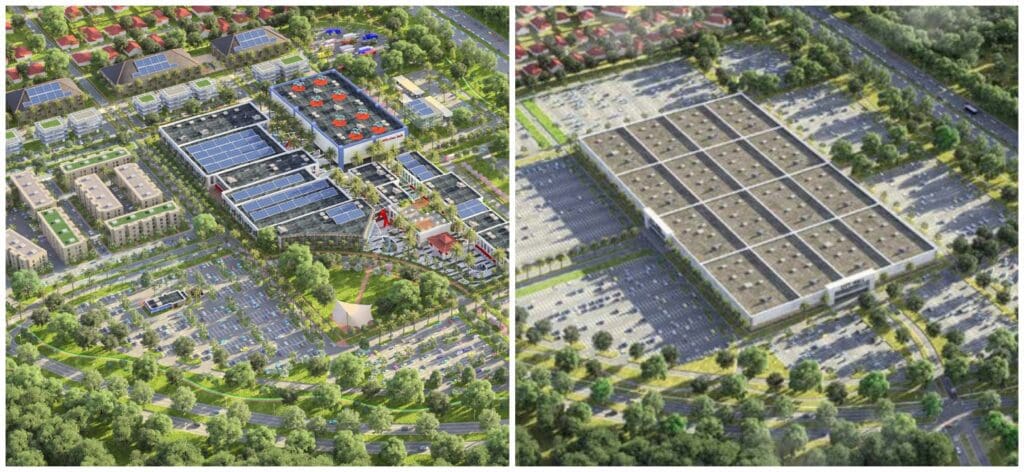
Like many malls around the United States, City Mall needed a reboot. With the rise in online shopping and reduced shopper interest in an outdated enclosed-mall format, the mall owners decided it was time to reimagine the 14-acre site’s potential.
Although the mall lost three of its four anchor stores, the property is located close to a highway in a fast-growing region. The regional transportation agency secured funding for a bus rapid-transit system and is conducting studies on where to locate stations. Within the mall, there are several popular small shops. The remaining anchor store holds a long-term lease and is open to redevelopment that aligns with its company’s strategic repositioning.
The mall owner and local government officials initiated a planning process. Its goal was to transform the mall by combining the best of urban design with phased strategies to kick-start a live-work-play-shop community. They realized highway access would position the site for strong markets in logistics, housing, future transit-oriented development, and evolving retail platforms.
Working with the community and stakeholders, the city developed a zoning overlay seeking to meet several goals common to all stakeholders:
Working with planners, the mall owners selected a phased design program that would allow them to focus on market-ready projects while simultaneously monitoring trends that could impact the site’s future phases. They settled on an eight-point program:
1. Begin by building a complete network for multimodal transportation within, and connecting to, the site
2. Determine areas of the older mall for selective demolition
3. Build new adaptable spaces (commercial, office, restaurant) in the mall’s central pedestrian esplanades
4. Identify underused parking that can serve new purposes for pop-ups, consolidated package pick-up zones, and land banks for future development
5. Identify design strategies for the transition between established neighborhoods and the new mix of housing and transit-oriented development
6. Construct two mobility hubs for regional and local transportation
7. Reuse a portion of the mall near the highway as a logistics hub
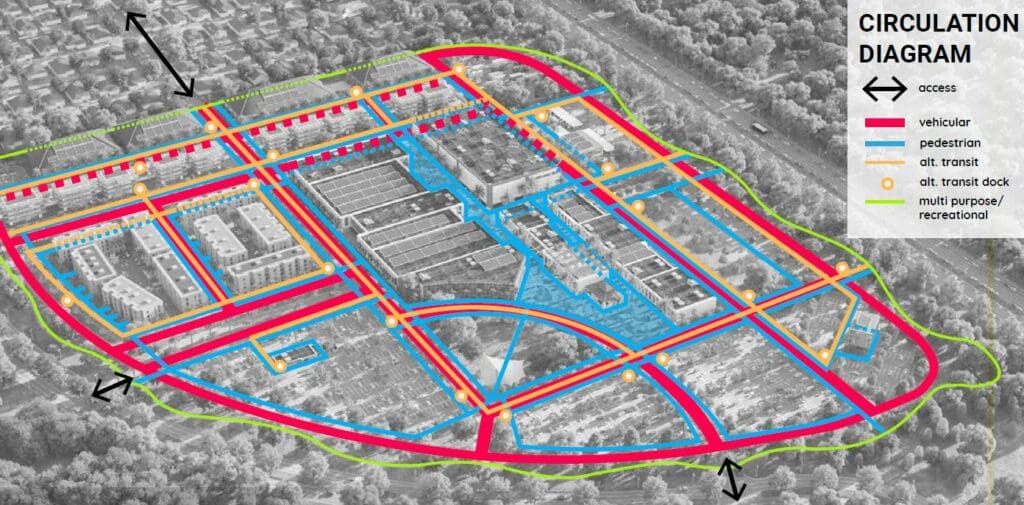
The first task was to create an internal street network supporting multiple transportation modes, transit access, and goods movement. The network was designed to meet multiple objectives and create:
• A phased, complete network for multiple modes and users (including deliveries and services)
— Phase 1 would create a trail circling the property, two parallel pedestrian promenades, and the framework for transit access around two mobility hubs
— Phase 2 would build out the central spine, an “electric avenue” that serves low-speed (20-30 mph) vehicles, and the potential for drone flight-path alignment
• Pedestrian and circulator linkages among “15-minute city” destinations
• Visibility and access for retail and public spaces
• Adaptable infrastructure designs for a mix of active transportation, plus a range of low speed (35 mph and lower) electric vehicle types
• Context-sensitive connections to neighboring areas
• Strategic design for highway connections (transit, deliveries, commuters)
• Potential routes for drones (air, ground, hybrid) while following evolving rules on flightpaths
To satisfy both existing and potential market needs, the mall owner and planners reviewed trends, impacts, and future-proofing strategies for the mall site — starting with those standing the test of time such as walkability, housing mix, and everyday retail.
In addressing market needs, the use mix created (1) a 15-minute city concept for workers and residents, and (2) uses that take advantage of highway access for transit and logistics. The site plan was built in phases to monitor and develop according to market signals:
Development Phase 1
The objective of this phase was building a varied and agile portfolio of complementary uses through:
Housing: Develop new housing at the mall’s edge and townhouses onsite
Adaptive Reuse: Reuse existing mall space for workspaces and a logistics hub
Demolition: Raze a portion of the mall to create new, smaller “flex spaces”
Land Banks: Strategically repurpose parking lot space for pop-ups, and consolidated customer pick-up areas
Open Space/Green Infrastructure: Design the central park space with programming to draw residents and regional visitors
Development Phase 2
The objective of this phase was supporting additional density/intensity by providing access to the transportation network through:
• Creation of two mobility hubs – one for regional bus service and another for local transit
• New incentives to attract businesses that supply essential daily uses (grocers, childcare, senior care)
• An adaptable transit-oriented overlay district designed to support future innovative transportation alternatives
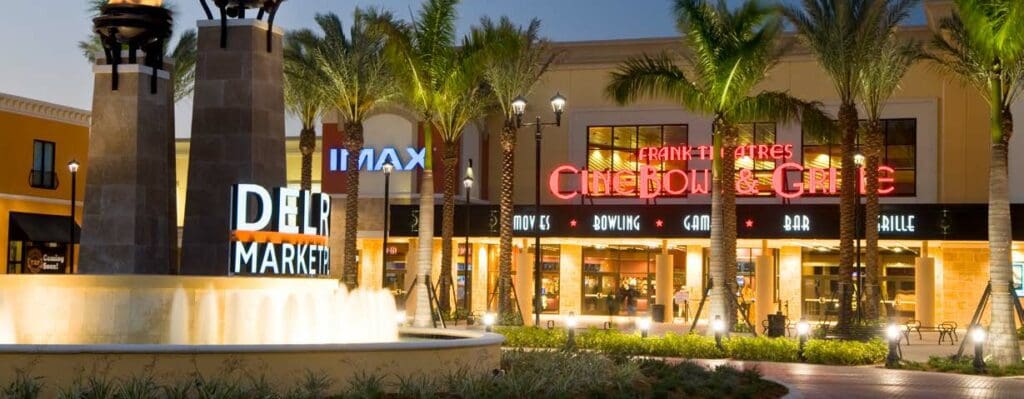
Mall redevelopment stakeholders knew the design details were critical for success. The Placemaking Details diagram shows some of the elements that went into creating this new community that rose from a former mall site. While the design of space is important, it’s what happens in the space that builds community. As such, the building, street, and park design included details allowing event planners to easily reprogram spaces for the wide range of events, sports, markets, and arts programming that now attracts visitors from throughout the region.
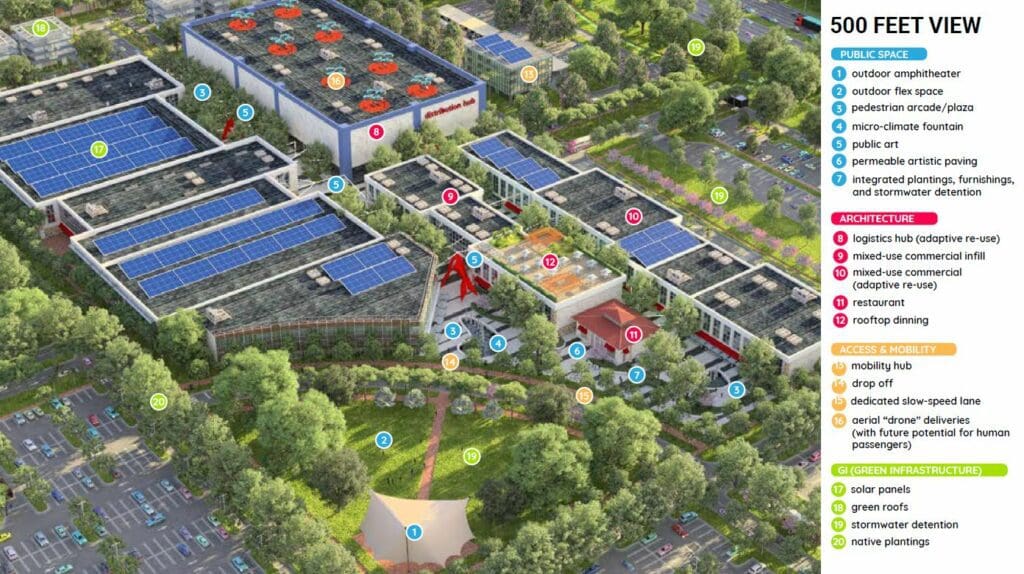
Adaptability in street and building design is gaining traction, though practitioners face codes that have the effect of locking in conventional form and function. As a master planned redevelopment, City Mall planners and architects had the opportunity to formulate flexibility into street and building design.
The number and type of low-speed electric vehicles grows every year as people seek low impact options for local trips under five miles. This innovation, however, poses a challenge given the wide range of speeds, from scooters and regular cyclists cruising at nine miles per hour, to e-bikes and neighborhood electric vehicles traveling at 25 miles per hour. How can this mix of low-speed modes travel safely?
The answer might lie in streets with smaller lanes (eight feet wide versus common 10-12 feet wide streets for cars) that recognize “slower” and “faster” travel patterns for low-speed electric vehicles. The slow lane can also host pick-up and drop-off points for deliveries and transit.
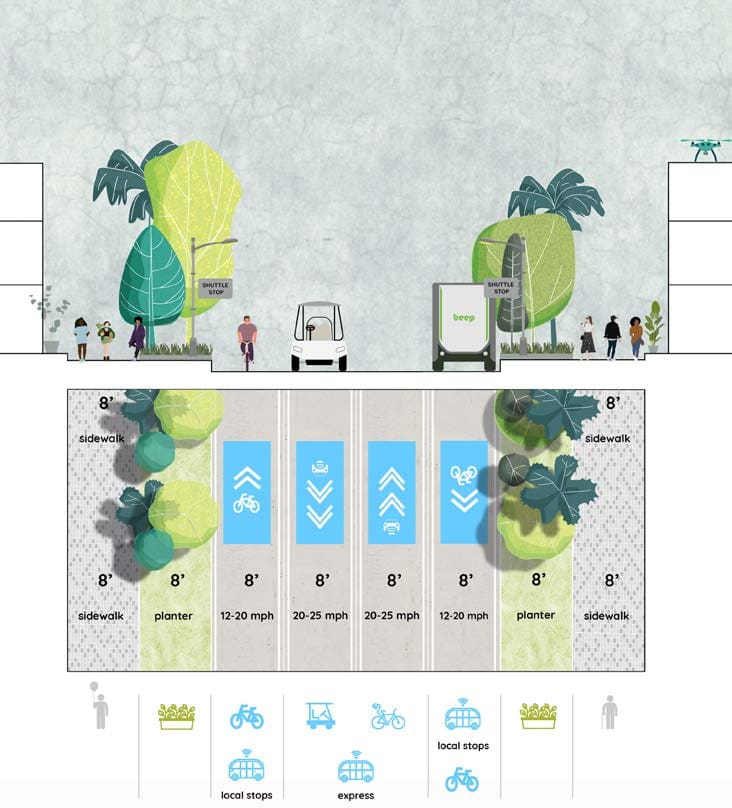
The design plan for City Mall’s redevelopment included strategic clustering around mobility hubs and the mixed-use town center. That mix of uses occurs among — and within — buildings. The ability to host various office, retail, residential, and service spaces provides flexibility to meet changing markets. Because City Mall’s structure is sound, the mall owners also had the option of adding floors to existing buildings.
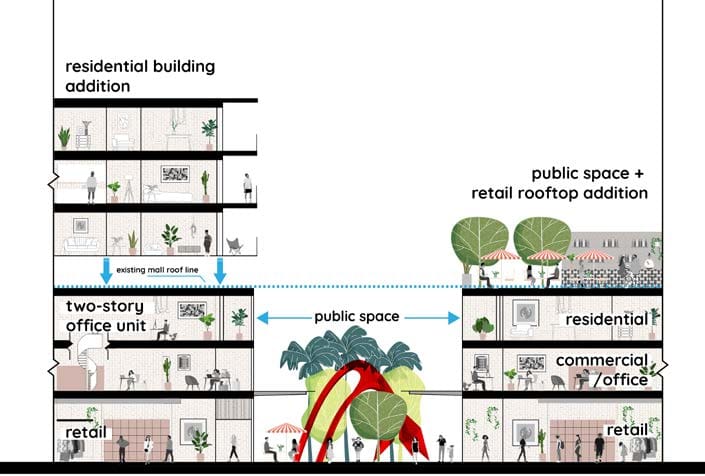
When traveling in and around the site, users get a feel of safety, convenience, and delight. Travel ways are designed for a comfortable mix of modes including traditional and future vehicle types. Using modular infrastructure, street managers can easily change lane configurations and uses. Walkability is not just a mode, but the design platform for economic vitality, health, and a sense of community. Landscaping materials are carefully chosen to perform several duties that include aesthetics, water management, shade, and traffic calming.
The end result is a regional asset with a neighborhood feel. What once drew people based only on shopping is now a new community.
Successful mall redevelopment does not follow a set template. Rather, several factors will help drive the realization of your vision, including the need to adjust to changing markets, building design, technology, and preferences.
Whether you are a property owner, management company, or municipal official, our multidisciplinary team is here to help you explore the opportunities, risks, and solutions for mall properties. WGI services include the following steps:
STEP 1:
Strategy – WGI will work with your team through trend workshops and analyses, technology foresight and recommendations, as well as strategies to unlock the most value from your mall properties.
STEP 2:
Feasibility – Our team will assess market demands, use-mix options, location, funding, financing, and leveraging incentives. Where needed, we will team with specialty and local economic-development firms.
STEP 3:
Planning – Our land development and urban design teams will identify needed comprehensive plan and zoning updates, circulation, parking, and design options. Where appropriate, this step also assesses specialty uses and plans such as logistic hubs, form based codes, transit-oriented development, and amenity spaces. A final deliverable will include a site plan supported with potential funding and phasing options.
STEP 4:
Graphics and Concepts for Public Engagement and Marketing – Our design team will supply renderings and graphics that communicate the value and excitement surrounding the transformation from shopping center to a new community asset.
STEP 5:
Architecture, Entitlements, and Construction – We will get your site shovel ready with needed construction and environmental permits, rezoning, surveys, and site preparation. If vertical construction is involved, our structural team has expertise in mixed-use design, parking structures, and building conversion. We understand the complete process from concept to construction and the agencies with jurisdiction.
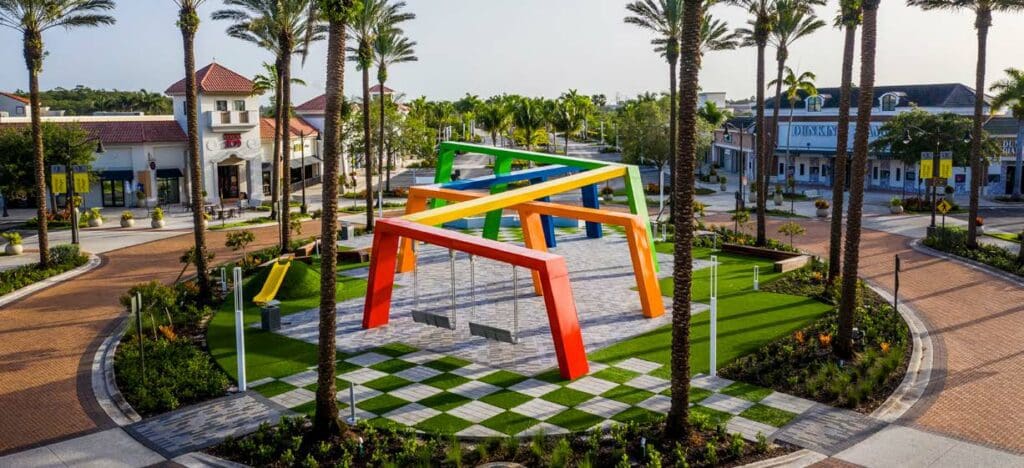
Contact our team of experts to learn more information about this study!

WGI is a national design and professional services firm leading in technology-based solutions for the construction of public infrastructure and real estate development. At WGI, we’re providing Tomorrow’s Infrastructure Solutions Today.
Texas Medical Center made $78M from parking last year. Why haven’t its busiest garages been upgraded in years?
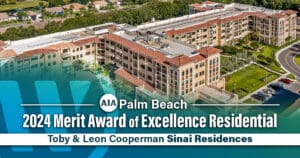
WGI, in collaboration with Leo A Daly, is honored to receive the 2024 AIA Palm Beach Merit Award of Excellence for our role in designing the lush, wellness-focused outdoor spaces of Toby & Leon Cooperman Sinai Residences’ new expansion. Discover how our landscape design enhances luxury senior living with resort-style amenities and inviting social spaces.
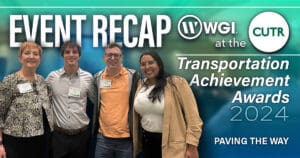
WGI proudly attended the 2024 CUTR Transportation Achievement Awards, celebrating impactful contributions and emerging leaders in Florida’s transportation sector. Dive in to learn more on how we’re continuing to propel the industry forward!

Join WGI SATX at the 10th Annual UTSA Engineering BBQ Cook-Off, where we served up smoky flavors, community connections, and a little STEM inspiration!
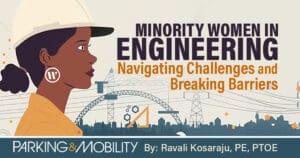
Discover the journey of minority women in civil engineering as they overcome challenges, redefine leadership, and build a more inclusive industry.
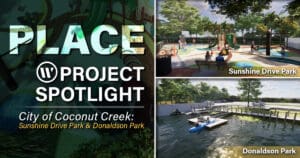
Discover how WGI is partnering with the City of Coconut Creek to reimagine Donaldson Park and Sunshine Drive Park with new recreational amenities, scenic trails, and enhanced landscapes—bringing innovative, sustainable design to the heart of the community.
You’ve been searching for a place like WGI. We look forward to meeting you soon.
Sign up to receive emails to hear our latest news and achievements in our monthly newsletter.
Enter your zip code, and we’ll personalize your experience with local projects, office locations, team members, and more.
WGI supports its associates with meaningful opportunities for growth, strong benefits and perks, while we work collaboratively with clients and co-consultants to shape and improve communities.






WGI is a dynamic organization with opportunities nationwide for engineers, land surveyors, landscape architects, environmental scientists, and architects.